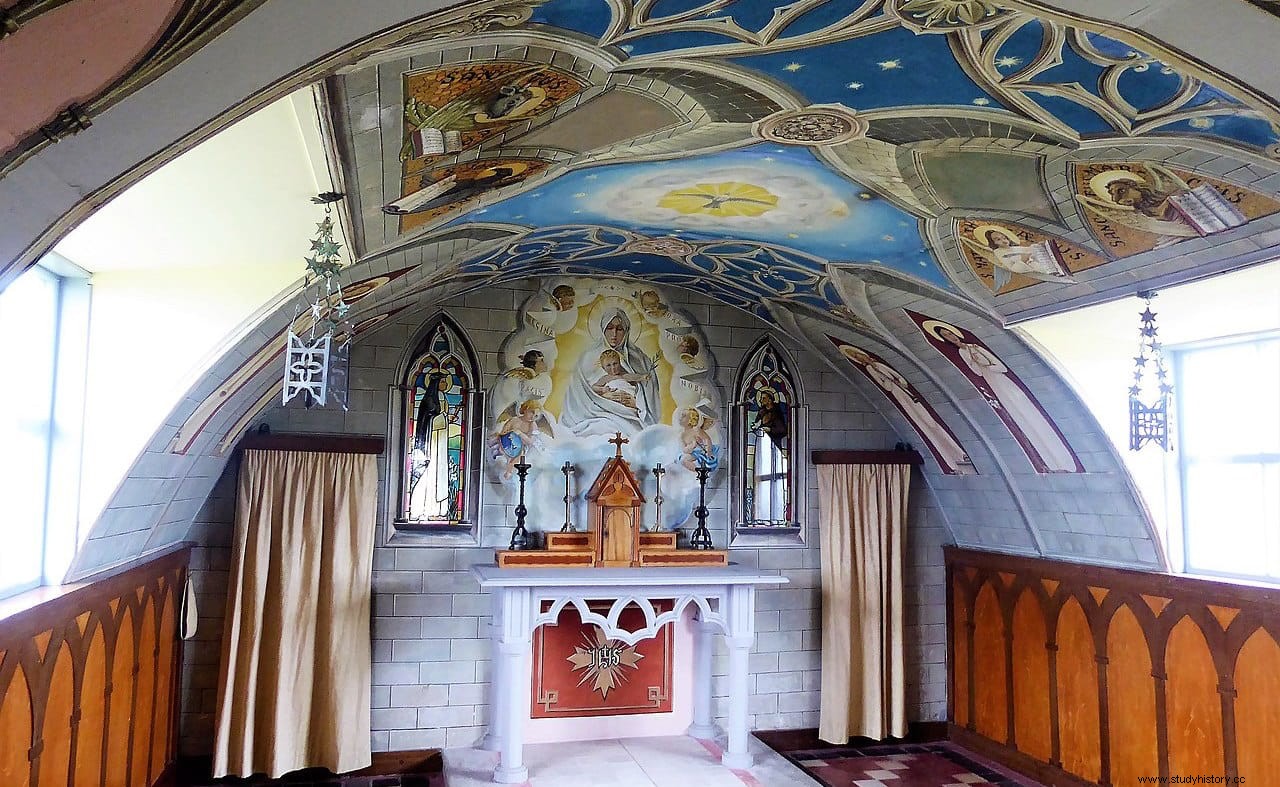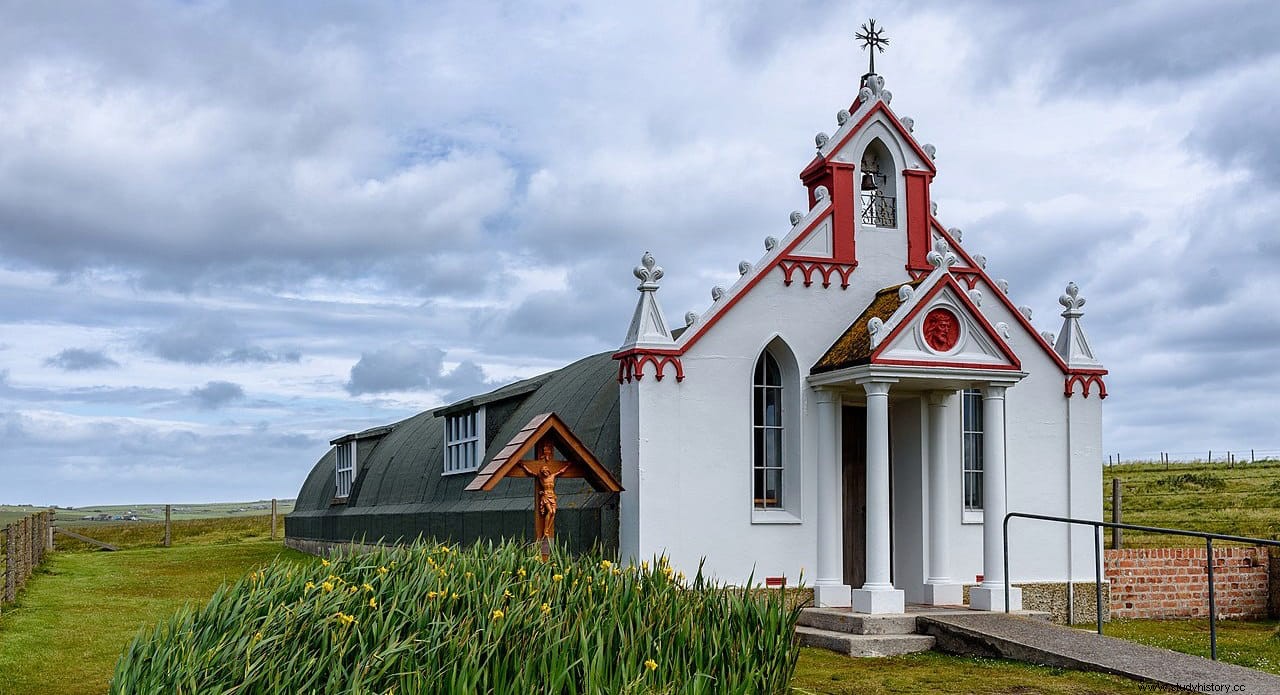Place yourself in the historical and geographical context. Place:the Orkney Islands , north of Scotland. Period:mid-World War II. Protagonists:the Italian prisoners confined in that archipelago to help in the construction work of the so-called Churchill Barriers , a series of dikes that were supposed to close the bay of Scapa Flow to keep the Allied fleet, which was based in that place, safe from German submarines.
Through one of those dikes, which are preserved today and serve as a bridge between island and island, you go from South Ronaldsday (specifically from St. Margaret's Hope, where the ferry that arrives from Great Britain docks) to Burray and from there to a piece of land called Lambholm , where you can visit one of the strangest Christian churches you have ever seen:the Italian Chapel or Italian Chapel .
From the front, the facade does not present anything special. But if you look at it from the side you will see that it is a simple military barracks sheet metal. The reason is simple:the aforementioned Italian prisoners, basically belonging to the Mantua Division and the Armored Corps captured in Africa (Tobruk and Benghazi) but transformed into the Fifth Labor Battalion, requested permission to erect a Catholic church . In fact, they had already managed to beautify what is known as Campo 60, planting flowers around it, concrete paths, etc.

Evidently they weren't going to build a stone temple because the war had ended earlier, any more than they could use wood since there were hardly any trees in Orkney. So they put together two prefabricated semi-cylindrical barracks end to end. (Nissen model) to those who tried to make up as much as possible.
This can be seen in the aforementioned façade, which is made of stone, but especially in the interior , to which they provided frescoes on the walls (previously covered with plaster), stained glass windows, iron gates, chandeliers and all the usual paraphernalia of Christian temples.
The funny thing is that apart from just doing it in their spare time, they had to resort to whatever materials they could get their hands on:some of the concrete they used to make the dams, scrap metal, wreckage from stranded ships… All under the enthusiastic direction of the Father Gioachino Giacobazzi , moved there in September 1943, and the art of a soldier named Domenico Chiocchetti , whose authorship also preserves the statue of Saint George and the dragon that can be seen a few meters in front of the chapel.

Although some religious services were held, before the imminent end of the war and the changes that took place in Italy in 1944, the prisoners were repatriated and the works of the sanctuary remained unfinished, so Chiochetti decided to stay to finish the job.
It was necessary to restore it in 1958, something to which a local committee formed by the inhabitants of Orkney themselves contributed, of which no less than two hundred attended the reopening mass officiated in 1960.
The survivors of that group of prisoners returned in 1992 to commemorate the fiftieth anniversary . Surely they never imagined that the project built during their captivity would end up becoming one of the tourist attractions of the archipelago. Of course, then it wouldn't even cross their minds that the place might attract visitors; tourism had not yet hatched and the situation did not seem exactly favourable.
